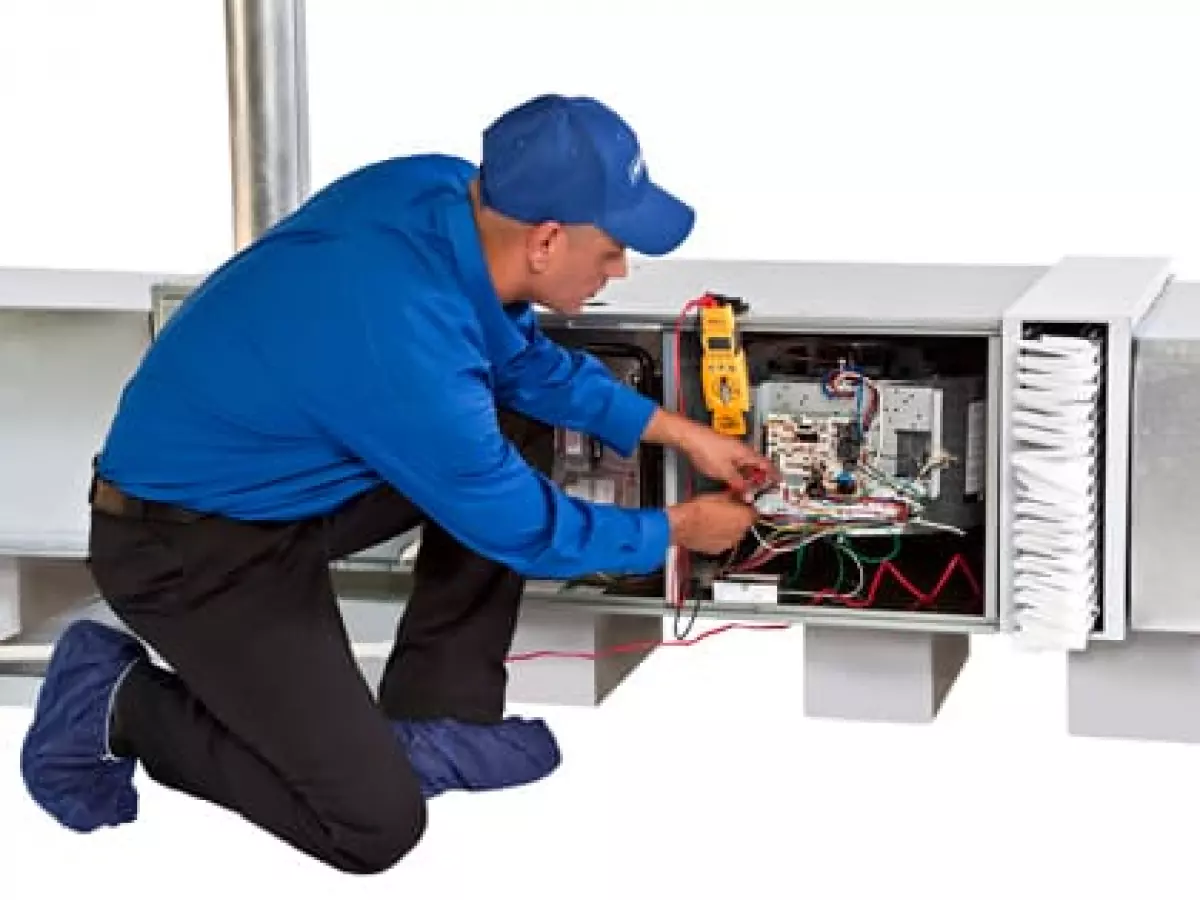 Picture: Technician servicing AC system.
Picture: Technician servicing AC system.
Since the 1970s, central air conditioning systems have been a popular choice for homes across America, providing comfort and convenience with a single thermostat control. These systems consist of various components that work together to deliver cool, dry air for optimal home comfort on hot days. By understanding how each part functions and how to identify potential issues, you can ensure better performance from your central air conditioning system year after year.
Condenser Unit
Central air conditioning systems rely on two main components: an outdoor condenser and an indoor evaporator. The condenser, housed in a metal cabinet with slats known as fins, is responsible for directing airflow. Typically positioned on a concrete pad beside your home, or occasionally on the roof, the condenser absorbs heat from the indoor air, which is then transferred to a refrigerant. This refrigerant is sent to the condenser, where the absorbed heat is radiated away into the outdoor air. Once the refrigerant has released its heat, it returns to your home to begin the cooling process again. To maintain proper condenser functionality, it's essential to clear the area surrounding it of debris and trim any landscaping within a three-foot radius. Regular cleaning can be done using a hose, or you can have your HVAC technician perform this task during routine maintenance visits.
Evaporator Unit
Inside your home, the air conditioner's evaporator unit works by drawing air across the evaporator coil. This coil contains the refrigerant, which absorbs heat from the air and cools it down. Once the air has been cooled, an air handler blows it through your ducts and into each room. If you also have a central furnace, the air conditioner and furnace will share the same electric air handler system. To keep the evaporator functioning optimally, it's important to have it cleaned by your HVAC technician during maintenance visits. Additionally, regular changing of the air filter in your air conditioning unit's intake will help keep the system free of dust and dirt, reducing strain on the blower motor and improving airflow.
Ductwork
To distribute cooled air throughout your home, central air conditioning systems utilize ductwork. The cooled air is blown into a central duct by your air handler, which branches out into each conditioned space in your home. The ducts end in air registers equipped with adjustable grilles that can control the airflow by being opened or closed. To ensure proper airflow, it's recommended to clean your air registers using the hose attachment of your vacuum. Avoid blocking the registers with furniture or other items, and refrain from closing too many registers at once, as this can strain your air handler.
Thermostat
The thermostat serves as the control center for your home's central cooling system. It prompts your air conditioner to run based on your desired temperature setting, comparing it to the ambient temperature in your home. To ensure accurate readings, place the thermostat in a shaded area away from any air registers that may influence temperature measurements. If your air conditioning system runs too frequently or not often enough, the thermostat may be the culprit.
Caring for your home's central air conditioning system involves implementing smart cooling practices and scheduling regular professional tune-ups to optimize AC unit efficiency. Book your annual spring air conditioning tune-up with the experts at ARS today by scheduling an appointment online.
[Picture: Technician servicing AC system.]












